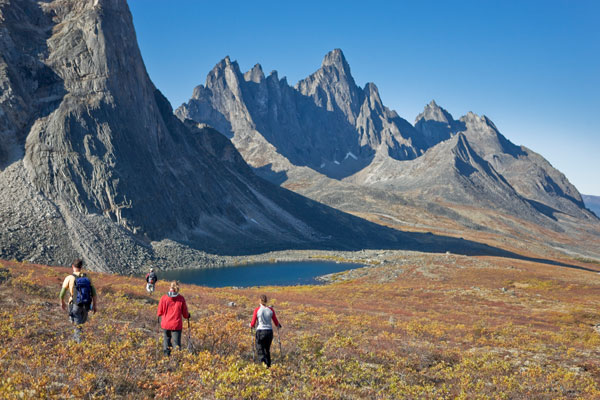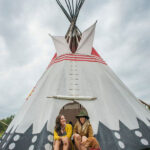One of three Canadian territories, Yukon is situated in the northwest corner of Canada’s continental mainland. It sits between the Canadian province of British Columbia and the Arctic Ocean, with Alaska to the west and the Northwest Territories to the east.
Yukon’s jaw-dropping natural features are what set this place apart. This is a land rich with dramatic mountain vistas, wild rivers and crystal clear lakes. Close to 80 per cent remains pristine wilderness.
We’re home to Canada’s highest peak, the world’s largest non-polar ice fields, several Canadian Heritage Rivers and healthy, abundant wildlife. From the crimson carpet of the tundra, to the majestic mountain peaks, the vast pristine wilderness of the Yukon beckons.
Our wild regions, varied ecosystems, and relatively sparse human population make the Yukon a haven for some of North America’s most rare and impressive species like caribou, wolves and grizzly bears and millions of migratory birds. Lynx, coyotes, foxes and scores of small mammals thrive in its forests.
Visitors come to explore legendary northern parks including Kluane, Tombstone, Ivvavik and the historic Chilkoot Trail.
Yukon also enjoys a rich cultural heritage. About one-quarter of all Yukoners are of Aboriginal ancestry and belong to one of fourteen Yukon First Nations and eight language groups. First Nations people play a significant role in all aspects of Yukon society – including its governance, resource management, economy, art and culture. The culture of Yukon’s First Nations people evolved over millennia into the rich tapestry of dialects, arts, crafts, cuisines, and practices that we enjoy today.
Of course, gold rush history infuses everything here. In August 1896 three men found gold on Bonanza Creek near Dawson City, launching the legendary Klondike Gold Rush. When the gold rush ended in 1903 more than 95 million dollars had been extracted from the Yukon’s rivers. Today, Dawson City is a lively place bursting with heritage sites and attractions. You’ll feel the grit, heartache and golden dreams of the Klondike Gold Rush when you reach this authentic frontier town.
Another of our heritage attractions, The White Pass and Yukon Route railway, climbs almost 3,000 feet (900 m) in just 20 miles (32 km) and features steep grades, cliff-hanging turns, two tunnels and numerous bridges and trestles. The steel cantilever bridge was the tallest of its kind in the world when it was constructed in 1901.
Visitors can also experience one of the world’s legendary road trips – the Alaska Highway. The road to North America’s last frontier was built in 1942 to transport war supplies. Completed in only 8 months, more than 30,000 US Army personnel were involved in the construction of over 2,230 km of road to Alaska. Today the Alaska Highway is a scenic paved route that is well-maintained and open year-round.

























Speak Your Mind